For kids, full-face snorkel masks can be a fun way to explore the ocean. You want your kid to be safe while they're in the water. Kids can see better and breathe more easily with these masks, but they also pose some important safety risks. Find out what you need to know about these masks and how to keep your child safe while they swim in this guide.
⚠️ THE MOST IMPORTANT RULE ⚠️
Directly supervise your child when they're using a full-face snorkel mask. No equipment or technology can replace your watchful eye and quick response.

Why Full-Face Snorkel Masks Can Be Risky for Children
There are many styles of diving masks for kids, including full-face masks that might seem useful but are actually very dangerous. There are sizes for kids that fit these masks, but they don't work the same way as regular snorkels and come with their own risks, especially for kids who aren't used to them or are younger.
Risk 1: CO2 Buildup Can Make Kids Sick Faster
With some masks, carbon dioxide can build up inside because they don't fully remove the air you breathe out. Kids are more likely to get CO2 buildup because their lungs are smaller and they breathe differently than adults. This could lead to headaches, dizziness, trouble breathing, confusion, or even passing out. Keep an eye out for danger signs like being very quiet, getting tired quickly, breathing quickly, or saying that you feel sick.
Risk 2: Kids May Struggle to Remove the Mask in an Emergency
Your child might not be able to quickly take off a full-face mask if water gets in or if they are scared. Full-face masks cover your whole face, while regular snorkels only have an opening through which you breathe. For kids, water getting into the mask can be scary, which can make things worse by making them worry.
Risk 3: Easy Breathing Can Lead to Overconfidence
Because kids can breathe through both their nose and mouth with these snorkel masks, it might feel more natural and comfortable. This can make both kids and parents overconfident, potentially trying deeper water or rougher conditions than they're ready for.
Risk 4: No Way to Equalize Ear Pressure
Most full-face masks are only made for swimming on the surface. If kids swim deeper, they can't pinch their nose to make the pressure in their ears uniform. Kids might not get this and could follow the fish down, hurting their ears or causing pain.

How to Choose a Full-Face Snorkel Mask for Your Child
Selecting appropriate equipment and realistically evaluating your child's capabilities are critical steps in ensuring their safety. Not every child is ready for a full-face snorkel mask, and not every mask is suitable.
Beyond Age: Assessing Your Child's Overall Readiness
While manufacturers may provide age recommendations, a child's chronological age is only one piece of the puzzle. A more holistic assessment involves several factors:
1. Swimming Ability and Water Confidence: Is your child a competent swimmer, comfortable with their face in the water, and able to maintain a calm demeanor in an aquatic environment? They should not be reliant on the mask for a sense of security in the water.
2. Ability to Understand and Follow Instructions: Snorkeling safely requires adherence to guidelines. Can your child listen to, comprehend, and reliably follow your safety instructions, even when excited or distracted?
3. Emotional Maturity and Anxiety Levels: Consider how your child typically responds to new or potentially challenging situations. If they are prone to anxiety, panic, or have claustrophobic tendencies, a full-face mask might exacerbate these feelings.
4. Prior Experience with Water Activities: Has your child successfully and comfortably used traditional snorkeling equipment (a separate mask and snorkel)? This experience can provide a good foundation.
Selecting a High-Quality Mask Specifically Designed for Children
If you determine your child is ready, the choice of mask is crucial.
1. Prioritize Reputable Brands with Safety Testing: Opt for masks from established manufacturers who are transparent about their safety testing, particularly regarding CO2 flushing and airflow systems. Avoid cheap, unbranded alternatives, as their design and material quality can be compromised.
2. Ensure a Perfect Fit for a Child's Face: An improper fit is a primary cause of leaks and discomfort, which can lead to panic.
- Accurate Measurement: Follow the manufacturer’s specific instructions for measuring your child’s face – this usually involves measuring the distance from the bridge of their nose to the bottom of their chin.
- Child-Specific Sizing: Always choose a mask explicitly labeled for children and one that corresponds to your child's measurements. Do not attempt to use an adult-sized mask.
- The Dry Land Seal Test: Before any water entry, place the mask gently on your child's face without securing the straps. Ask them to inhale slightly through their nose. If the mask has a good seal, it will draw slightly inward and remain in place for a few moments without support. Carefully check around the entire skirt of the mask (the soft silicone edge) for any gaps where it meets the skin, paying close attention to the temples, under the eyes, and around the chin. Hair should be completely cleared from the seal area.
3. Easy-to-Operate Quick-Release Buckles: In an emergency, the mask must be removable quickly. Ensure the strap buckles are easy for an adult to release rapidly, and if the child is old enough, they too should be able to operate them, or at least understand how they work.
4. Lightweight Design: A heavy mask can cause neck strain and discomfort for a child, detracting from the experience and potentially leading to premature fatigue.
5. Clear Field of Vision and Anti-Fog Features: Good visibility is essential for enjoyment and for the child to see the supervising adult. An effective anti-fog coating or design will prevent the lens from misting up.
When to Consider a Full-Face Snorkel Mask for a Child
For younger children or beginners, a traditional mask and snorkel is often safer. It's easier to clear water and feels less confining. Consider a full-face mask only if your child strongly dislikes traditional mouthpieces but meets all other readiness criteria. Always provide extra supervision with full-face masks.

How to Train Your Child Before Using a Full-Face Mask
Before heading to open water, help your child practice using their mask in a safe, controlled environment.
Start in a Swimming Pool or Bathtub
Don't introduce the mask at the beach or on a boat. Begin in a calm swimming pool or even a bathtub where your child can get used to the mask without waves, currents, or other distractions.
Teach Proper Breathing Techniques
First, have your child practice breathing in the mask on land. Then move to shallow water where they can stand. Show them they can breathe through their nose, mouth, or both. Encourage slow, deep breaths instead of quick, shallow ones.
Practice Putting On and Taking Off the Mask
Help your child get comfortable with putting on the mask and, more importantly, taking it off quickly. Show them how to adjust the straps for a snug but comfortable fit. Practice using the quick-release buckles. Making this into a game can help reduce anxiety. Always double-check the final fit yourself.
Teach Three Essential Safety Skills
Keep explanations simple and clear:
- If water gets in the mask: Tell your child that small amounts of water might get in sometimes. Teach them to stay calm, lift their head slightly, and let water drain out through the valve or signal you for help.
- Emergency signal: Create a clear hand signal (like a raised hand or thumbs down) for your child to use if they feel uncomfortable, scared, can't breathe well, or need help for any reason. Practice using this signal together.
- Staying calm: Perhaps most important - teach your child that if anything goes wrong, they should stay calm and signal for help. Panic makes everything harder.
Set Clear Rules Before Open Water
Before snorkeling in open water, make sure your child understands these rules: always stay within arm's reach of an adult, never snorkel alone, keep the mask at the surface (no diving down), and immediately signal if feeling tired or unwell.
Safety Rules While Your Child Is Snorkeling
After preparing your child and selecting the right equipment, follow these essential safety practices when snorkeling in open water.
Stay Within Arm's Reach at All Times
Always keep your child within arm's reach. Give them your complete attention - no phone checking or lengthy conversations with others. Don't assume they're fine just because they're quiet. For younger or less confident children, provide one-on-one supervision. The supervising adult should be a good swimmer who's comfortable in the water.
Pick Safe Snorkeling Spots
Choose locations that are:
- Calm and clear
- Shallow water
- Protected from waves and currents
- Free from boat traffic
A gentle sloping beach or protected cove works better for children than deeper offshore areas. Research the location before you go.
Keep Sessions Short
Children tire more quickly than adults, but may not realize it when they're excited. Limit initial snorkeling sessions to 15-30 minutes, depending on your child's age and stamina. Take regular breaks out of the water or at least with the mask off. Use these breaks for rest, drinking water, and checking how they're feeling.
Stay at the Surface
Remind your child that full-face masks are only for surface swimming. Don't let them dive underwater, even in shallow areas. These masks aren't designed for diving and can cause ear pain since children can't pinch their nose to equalize pressure.
Consider Using a Life Vest
For extra safety, especially with children who aren't strong swimmers, use a properly fitted child-sized life vest or snorkeling vest. This helps them stay comfortably at the surface and reduces tiredness. A vest doesn't replace your direct supervision.

How to Recognize and Respond to Emergencies
Even with good preparation, problems can still happen. Here's how to spot trouble early and act quickly.
Warning Signs of Breathing Problems
Watch for these signs that your child might not be getting enough oxygen or is breathing too much CO2:
- Pale skin or a bluish color around the lips or fingernails
- Fast, shallow, or difficult breathing
- Headache, dizziness, or blurred vision
- Sudden irritability, confusion, or not following instructions
- Poor coordination or unusual clumsiness
- Becoming unusually quiet or not responding normally
What to Do Immediately
If you notice any of these signs or your child signals for help:
- Keep yourself calm
- Lift your child's head clear of the water
- Remove the mask quickly but calmly
- Reassure them and encourage slow, deep breaths
- Move to a safe spot - either out of the water or to a stable floating device
When to Get Medical Help
Seek medical attention right away if your child:
- Loses consciousness
- Continues to have trouble breathing after the mask is removed
- Seems very disoriented
- Shows any concerning symptoms that worry you
Knowing CPR and basic first aid for children is extremely valuable for all parents, especially when doing water activities. Consider taking a certified course to learn these skills.
Keep Your Child Safe with the Full-Face Snorkel Mask!
Full-face snorkel masks can give your child a window to the underwater world, but require careful attention to safety. Choose a high-quality mask that fits properly, make sure your child is ready to use it, practice in controlled environments first, and always supervise them within arm's reach. Watch for signs of breathing problems and respond quickly if issues arise. With proper preparation and constant vigilance, your child can safely enjoy the wonders beneath the surface.

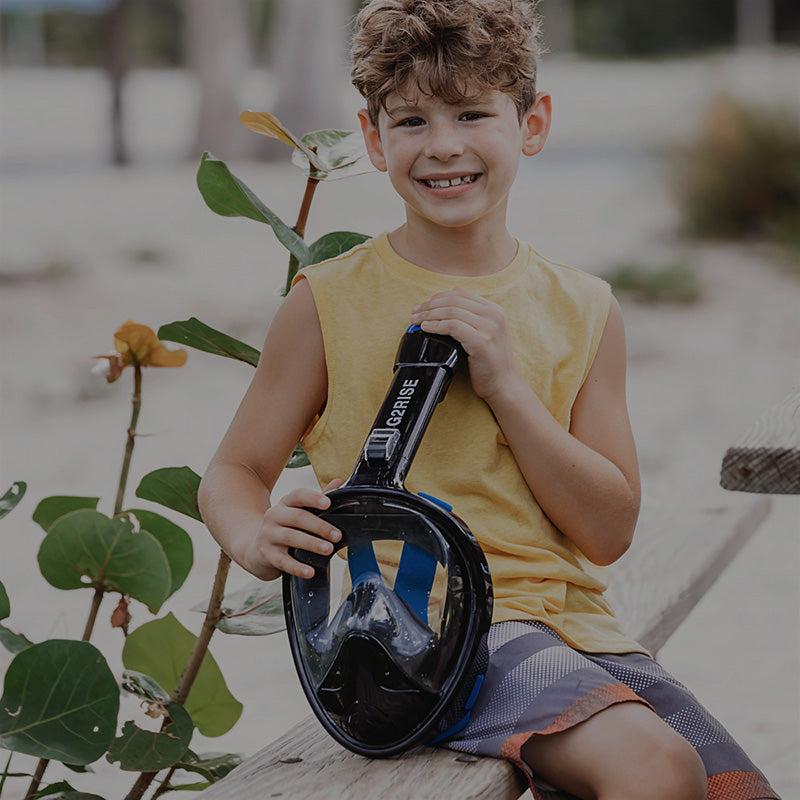
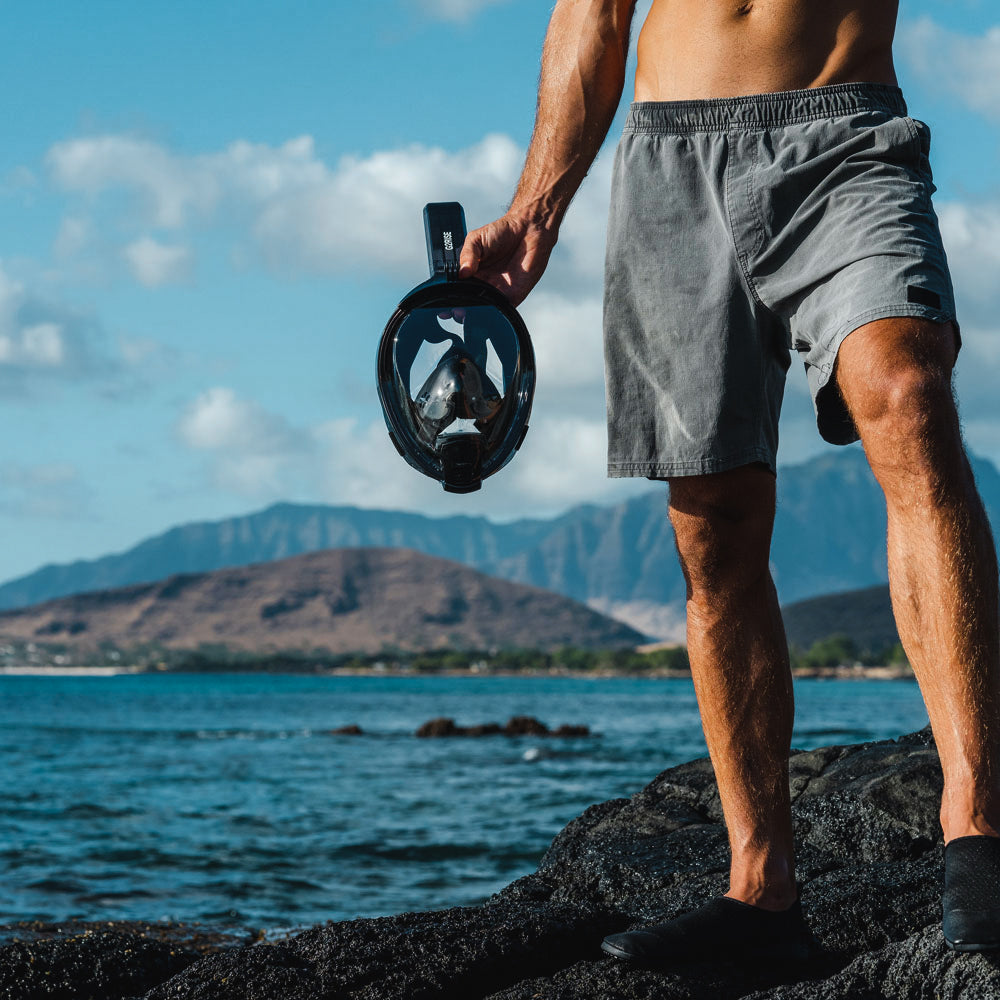

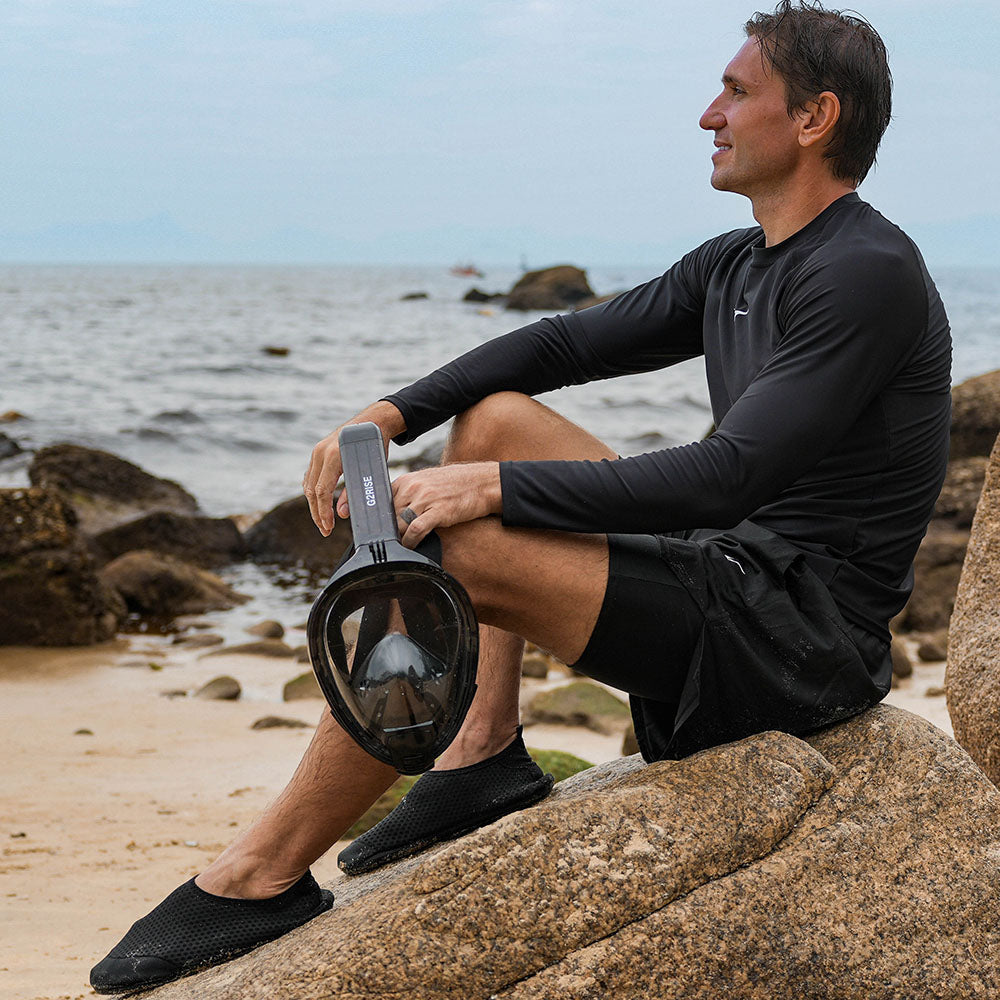
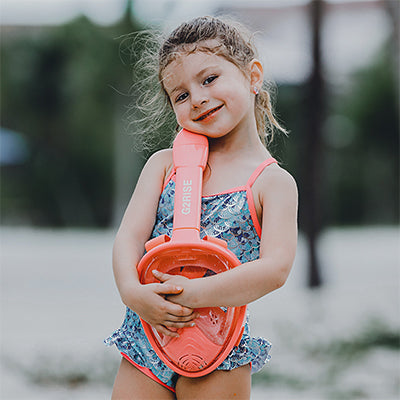
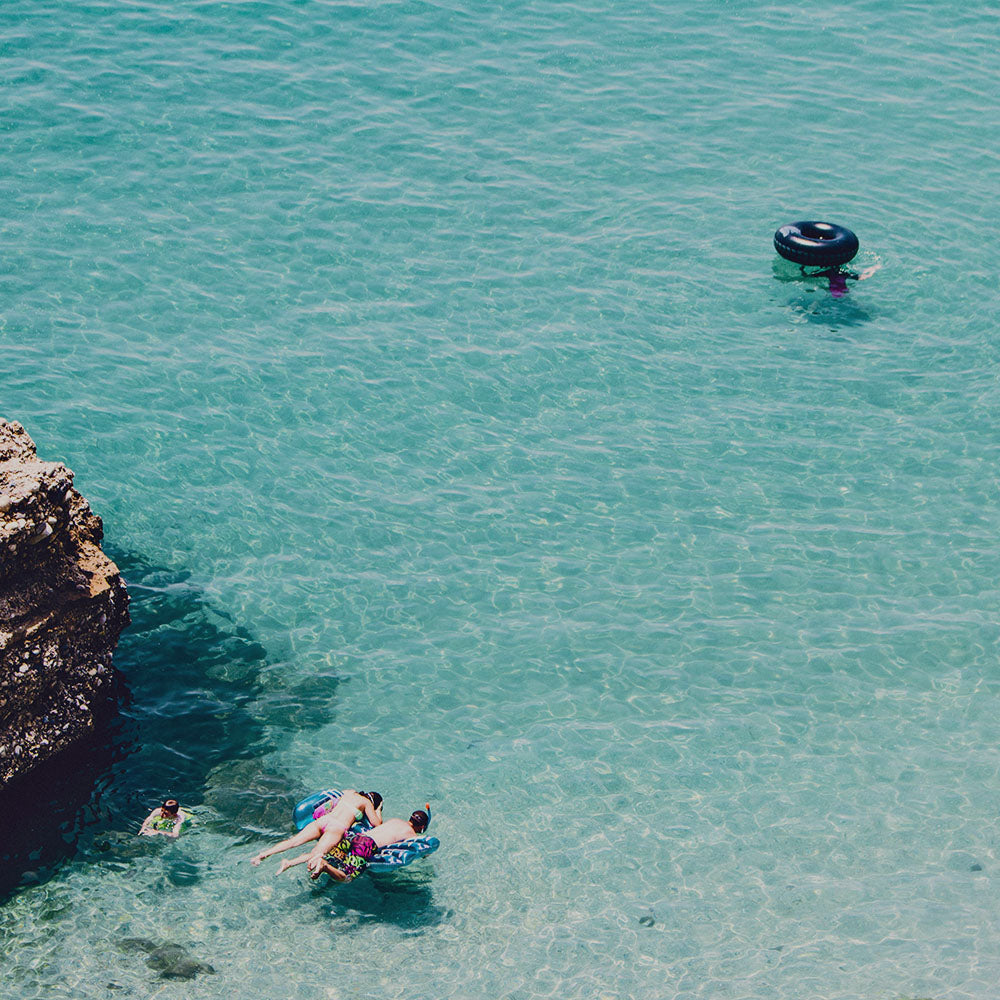


Leave a comment
This site is protected by hCaptcha and the hCaptcha Privacy Policy and Terms of Service apply.